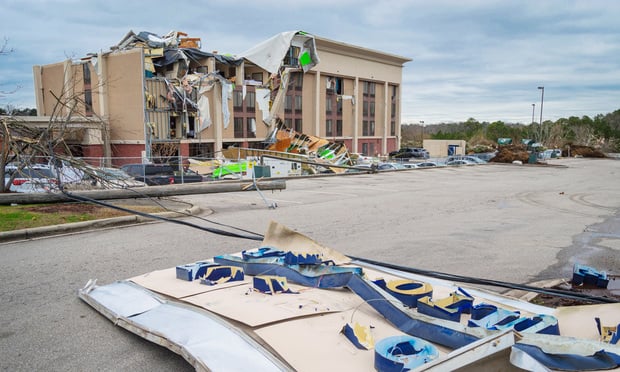(Bloomberg) -- A pipeline the oil market had all but forgotten resurfaced like a painful memory last week, spilling 500 barrels of heavy oil into the Pacific Ocean.
Line 901. A quarter century ago, it was a pipeline full of promise. Today, it’s full of -- not much, really. Before it leaked on May 19, pouring viscous crude into the waters off California’s coast, the 24-inch line was schlepping 28,800 barrels a day, mostly to a small refinery near Santa Barbara, at less than a fifth of its capacity.
It’s a relic from another time, an era that peaked in the 1990s when drillers dove into the waters off California’s coast chasing billions of barrels lying beneath the ocean floor. The state was producing so much crude back then that a larger pipeline was built to send California’s offshore oil to Texas. Today, Kinder Morgan Inc. has a plan to revive that link -- to send Texas oil to California’s refiners.
“This line is a remnant, from when huge volumes of California oil were supposed to materialize and never did,” David Hackett, president of energy consultant Stillwater Associates in Irvine, California, said of the Plains All American Pipeline LP system that leaked. “Now the shale revolution’s changed everything. We’re seeing dramatic increases in production elsewhere.”
In 1969, a blowout at a Union Oil platform dumped an estimated 80,000 barrels of crude off the coast of Santa Barbara in what was then the worst spill in U.S. history. Ensuing moratoriums helped cut the state’s offshore oil production to a fourth of its August 1995 peak at 204,000 barrels a day.
‘Finite Resources’
“There are a number of reasons production falls, but there are platforms that have shut since then, and these are finite resources,” Sheri Pemberton, chief of external affairs for the California State Lands Commission, said by phone May 26.
California’s total oil production peaked at 1.11 million barrels a day in February 1986. Environmental battles and the unique challenge of boring through uneven layers of rock have curbed new drilling as flows from legacy fields peter out.
Last week’s spill may be another blow to California oil production, with environmentalists including Food & Water Watch calling on policy makers to phase out drilling in the state altogether. Plains All American spokesman Brad Leone declined to comment, saying the company is focused on its response to the spill.
Total Output
The drop in oil production in state waters has slowed in the past few years and actually rose in 2013 by 3,000 barrels a day to about 40,000, state data show. Companies have been using technological improvements such as directional and extended-reach drilling to keep platforms alive, according to the California Energy Commission.
West Texas Intermediate for July delivery added 21 cents to $57.72 a barrel in electronic trading on the New York Mercantile Exchange at 1:34 p.m. Singapore time.
“Bringing additional wells online can and did increase total output from state waters,” Gordon Schremp, a senior fuels specialist at the energy comission, said by e-mail on May 26.
Those wells face stiffer competition than they did 25 years ago. California’s oil refiners have brought in record volumes of cheap oil by rail and barge from shale formations such as North Dakota’s Bakken and Colorado’s Niobrara. In 2012, North Dakota surpassed California and Alaska to become the nation’s second-biggest oil producer.
Canadian Oil
Crude from Canada’s oil sands is also showing up at California’s plants, as well as the occasional Texas barrel.
That’s where Kinder Morgan’s Freedom pipeline comes in, the project that would revive the path that once carried California oil to Texas. Kinder hasn’t provided an update to the market on the Freedom project since saying it was gauging interest from potential customers and shippers, company spokesman Richard Wheatley said May 27.
“It’s interesting how these pieces of pipe in the ground get repurposed, isn’t it?” Hackett asked. “If this one’s actually done, it’s going to be just one in a long line of pipes that are being repurposed in ways that nobody could have ever anticipated.”
--With assistance from Robert Tuttle in Calgary and Esme E. Deprez in Santa Barbara.
Copyright 2018 Bloomberg. All rights reserved. This material may not be published, broadcast, rewritten, or redistributed.
Want to continue reading?
Become a Free PropertyCasualty360 Digital Reader
Your access to unlimited PropertyCasualty360 content isn’t changing.
Once you are an ALM digital member, you’ll receive:
- Breaking insurance news and analysis, on-site and via our newsletters and custom alerts
- Weekly Insurance Speak podcast featuring exclusive interviews with industry leaders
- Educational webcasts, white papers, and ebooks from industry thought leaders
- Critical converage of the employee benefits and financial advisory markets on our other ALM sites, BenefitsPRO and ThinkAdvisor
Already have an account? Sign In Now
© 2024 ALM Global, LLC, All Rights Reserved. Request academic re-use from www.copyright.com. All other uses, submit a request to [email protected]. For more information visit Asset & Logo Licensing.








